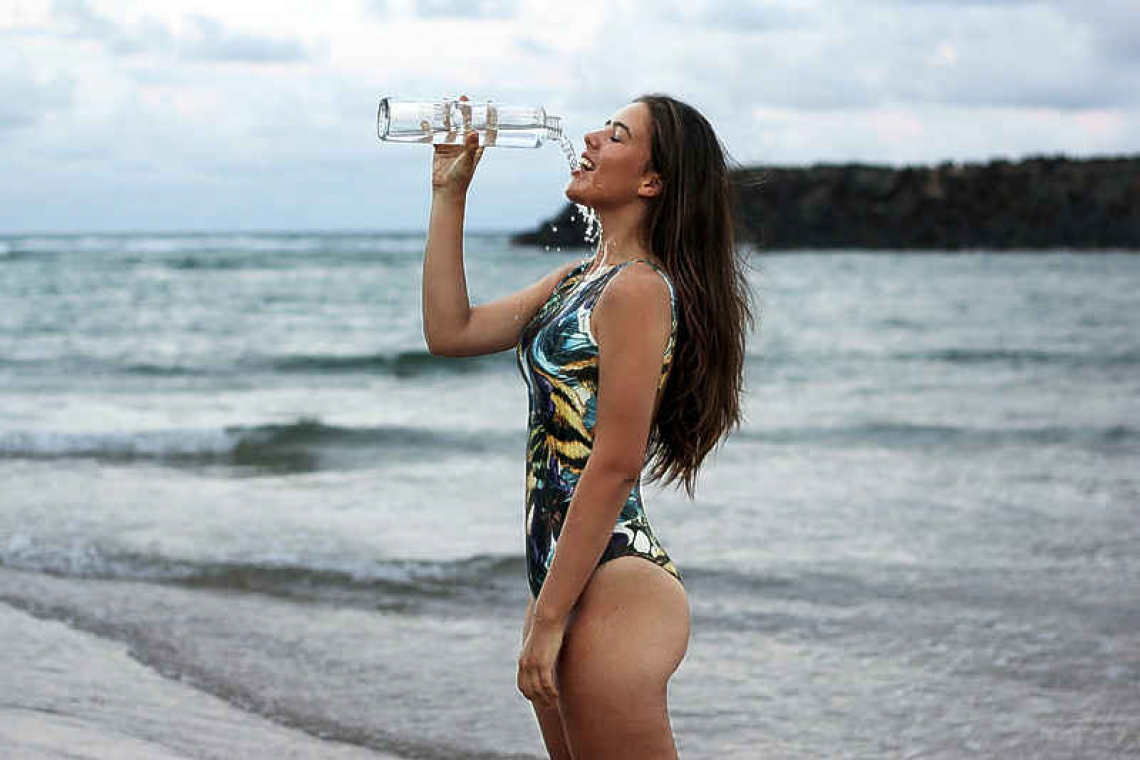By Colin Michie FRCPCH FRSPH FLS RNutr FRSA
Hammock times have arrived! As summer warms up, hot breezes slow you down, siestas become longer, hot nights uncomfortable. Only iguanas stay out in that toasting sunshine.
We are dynamic metabolic machines, always warm. Even layabout adolescents dozing in bed generate heat. Warmth comes from our breakdown of high energy molecules by busy cells. However, should our carefully maintained body temperature rise from 37 to 40 degrees Celsius (98 to 104 degrees Fahrenheit), we become hyperthermic. This may happen during an infectious fever, or if we work, exercise or play sports in the heat. Normally, we lose calories by radiating or conducting heat to everything around us, in the evaporation of sweat, in the heat and moisture of our breath. To increase heat loss, we dilate blood vessels in the skin, our largest organ. Dilating those extensive networks of surface vessels makes our heart work harder, beat faster. We may breathe faster too, like panting iguanas. We lose fluid in our sweat and breathing.
Training helps us condition to heat. Experienced firefighters are known to be better adapted to coping with heat than their rookie colleagues. Domesticated animals such as racehorses improve their heat tolerance with training. Cells adapt to thermal stress by making specific heat-shock proteins that can function as thermal chaperones. One of their many jobs is to ensure that proteins or lipids damaged by heat are replaced, refolded and redirected to normal function. These “housekeeping” molecules drive repair programmes, although their exact methods of carrying out these wonderful activities are unclear.
When heat-coping mechanisms fail, we will suffer heat-related illnesses, starting with exhaustion and progressing to heat-stroke. That increased blood circulation to the skin reduces blood flow to the brain, kidneys and muscles; it is a stress-test to these organs. We might become tired, dizzy, sleepy, develop a headache or have trouble speaking. Muscle cramps, standing and walking may become a challenge. Heat casualties of this nature are seen regularly in athletic events. Last year in the Tokyo Olympics, 48 athletes were admitted for Hospital care, 96% with heat-related illness.
A really hot day is only the first chapter in a longer health story for populations of “normal” people. Heat trauma may result in illness over weeks with hidden organ damage. In 2003, over 70,000 Europeans died of heat-related disease during a particularly brutal summer. At the time, electric fans sold out in Paris and Rome. A recent study of over 2 million hospital admissions in Fujian province, China, showed that hot summers were most damaging for those over 65, particularly if they had no access to air conditioning and water. Causes of death in both these situations were cardiovascular events in the days after the heat-wave, or strokes over the following three or four weeks. Kidney impairment after heatstroke, often silent and hidden, contributes to renal failure in older citizens. Blood disorders such as sickle cell trait make cardiac workloads higher when challenged by heat. Particular care needs to be taken, therefore, by our athletes working alongside these genetic conditions.
To cool a hot person, use conduction and evaporation. Iced-water immersion is rapid, iced-water sheets might be more practicable, or mist and fan approaches can be used. Local ice packs placed around large blood vessels, in the neck, groin and armpits are less effective. Rehydration is crucial – water works. A medical check is helpful in the elderly or in those on medication, because levels of salts, sodium in particular, can be disturbed by heatstroke. High temperatures not only impact humans – animals suffer too. Veterinary series have highlighted the plights of dogs, particularly older pets, confined to vehicles and unable to escape heat. Thermal impacts on the species-rich shallow seas around St. Maarten, as well as her other amazing ecosystems, are only just beginning to be explored.
Over the last few years, several parts of our planet – Australia, the Middle East and central Asia – recorded temperatures of 54 degrees Celsius. Climate change will raise temperatures in the centres of continents. One of the warmest decades on record was 2010-2020. What might we predict? Spanish records suggest that their populations have acclimated since 2003 to rising temperatures. Carefully designed cooling city architectures, with reflective roofing and green spaces, together with an increased awareness have slowed predicted rises in “golpe de calor” and heat-related deaths. Perhaps a communal ramping up of our heat shock responses might help us evolve and develop more thermo-tolerance.
To keep our rural or urban municipalities safe for the elderly, to promote safe tourism and economic productivity, we should all consider heatstroke. We need to design cooling facilities when preparing for the canicules, these dog days of summer. Not just core degrees, joules and calories; but core community values are required to shorten the health tales to our summers.







